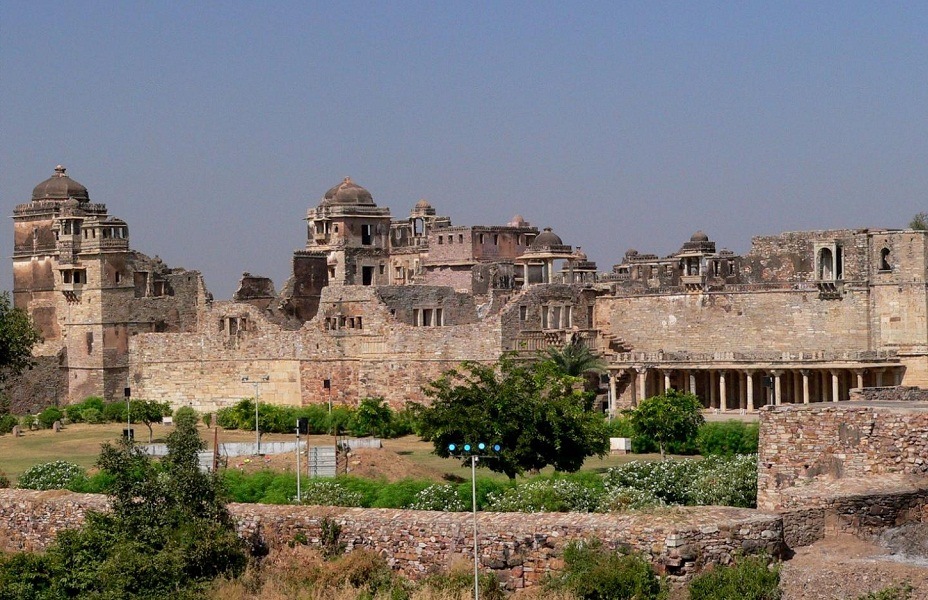The Historic Importance of Chittorgarh: A Visitor’s Point of view
Check This Out
Nestled in the condition of Rajasthan, Chittorgarh is a town that resonates with tales of bravery, romance, and tragedy. Its landscape is dotted with architectural marvels that explain to stories of a bygone era. For site visitors, Chittorgarh features a profound journey into India’s loaded background, specially as a result of its iconic Chittorgarh Fort, 1 of the most significant forts in India. This posting explores the historic significance of Chittorgarh from a visitor’s point of view, delving into the have to-visit sites within this historic town.
Chittorgarh Fort: The Heart of Chittorgarh
The Major Fort in India
The Chittorgarh Fort is not just the most popular landmark in the town but also the major fort in India, sprawling more than seven-hundred acres. Crafted in the 7th century by the Maurya dynasty, this fort stands as a testomony to the valor and chivalry of Rajput warriors. The fort’s architecture is a mix of Hindu and Rajput kinds, featuring intricate carvings, grand gates, and towering partitions that have withstood many sieges.
Critical Sights Within just the Fort
Vijay Stambh (Victory Tower)
The Vijay Stambh, or Victory Tower, was constructed by Maharana Kumbha in the 15th century to commemorate his victory above the merged armies of Malwa and Gujarat. Standing at 37.19 meters, this 9-tale tower is adorned with in-depth sculptures of Hindu deities and inscriptions that narrate the story of the battle. Website visitors can climb to the top for a panoramic look at of the fort and the encompassing landscape.
Kirti Stambh (Tower of Fame)
The Kirti Stambh, or Tower of Fame, predates the Victory Tower and was made in the 12th century by a Jain service provider to honor Adinatha, the initial Tirthankara of Jainism. This 7-tale tower is noteworthy for its intricate carvings and statues of Jain saints. It serves as a reminder of Chittorgarh’s historical importance as a heart for Jainism.
Rana Kumbha Palace
Rana Kumbha Palace, now in ruins, was the moment the home of Maharana Kumbha. This palace is renowned for its historic worth and architectural grandeur. It was below that Rani Padmini executed Jauhar (self-immolation) to steer clear of capture by Alauddin Khilji. The palace advanced incorporates quite a few rooms, corridors, and subterranean cellars, which intrigue historians and visitors alike.
Gaumukh Reservoir
The Gaumukh Reservoir is a pure water tank located within the fort sophisticated. Named after its form resembling a cow’s mouth, this reservoir is considered sacred and is fed by a perennial spring. The serene ecosystem and the historical importance of the reservoir make it a popular location for website visitors seeking tranquility amidst the historic ruins.
Exploring Chittorgarh Over and above the Fort
Padmini’s Palace
Positioned to the south of the fort, Padmini’s Palace is an additional major web site that attracts readers. This a few-storied white making is surrounded by a h2o moat and is affiliated with the famous elegance of Rani Padmini. It was right here that Alauddin Khilji was allowed to see the reflection of Rani Padmini in a mirror, which in the end led to his want to capture Chittorgarh.
Meera Temple
The Meera Temple, dedicated to Meera Bai, the famed devotee of Lord Krishna, is an architectural gem in Chittorgarh. Created in the Indo-Aryan fashion, the temple characteristics exquisite carvings and a serene ambiance that draws in devotees and history fans alike. Meera Bai’s tales of devotion and her compositions still resonate within just the temple walls, featuring a spiritual retreat for visitors.
Kalika Mata Temple
The Kalika Mata Temple, originally constructed in the eighth century and afterwards reconstructed, is committed to Goddess Kali. This temple showcases the spiritual side of Chittorgarh and displays the city’s historical religious techniques. The temple is in particular energetic throughout the Navratri festival, attracting several devotees who appear to search for blessings.
Fateh Prakash Palace Museum
The Fateh Prakash Palace, constructed by Maharana Fateh Singh, has been converted into a museum showcasing a large collection of artifacts from the royal period. Website visitors can investigate the museum to see weapons, paintings, historic files, and sculptures that deliver insights into Chittorgarh’s loaded cultural heritage.
Comprehension Chittorgarh’s Historic Context
The Legendary Battles
Chittorgarh is synonymous with the famous battles fought by the Rajputs to protect their honor and kingdom. The fort witnessed a few major sieges, the most noteworthy staying the siege by Alauddin Khilji in 1303, Bahadur Shah of Gujarat in 1535, and Emperor Akbar in 1567. Each and every siege left an indelible mark on the city’s record, epitomizing the bravery and sacrifice of its people today.
The Observe of Jauhar
One of the most poignant facets of Chittorgarh’s heritage is the exercise of Jauhar, a ritual of mass self-immolation done by gals to stay clear of capture and dishonor. The three Jauhars that took location at Chittorgarh fort are significant occasions that replicate the tragic however heroic spirit of the Rajput girls. These gatherings are deeply etched in the collective memory of the region and are commemorated as a result of several memorials and stories handed down as a result of generations.
Summary
Viewing Chittorgarh is not merely a journey as a result of historical ruins but an immersive expertise into India’s prosperous historic and cultural tapestry. The city’s landmarks, from the sprawling Chittorgarh Fort to the serene temples and palaces, offer a glimpse into a earlier crammed with heroism, spirituality, and architectural brilliance. For any heritage fanatic or cultural explorer, Chittorgarh stands as a beacon of India’s storied past, inviting website visitors to delve into its historic importance and marvel at its enduring legacy.
